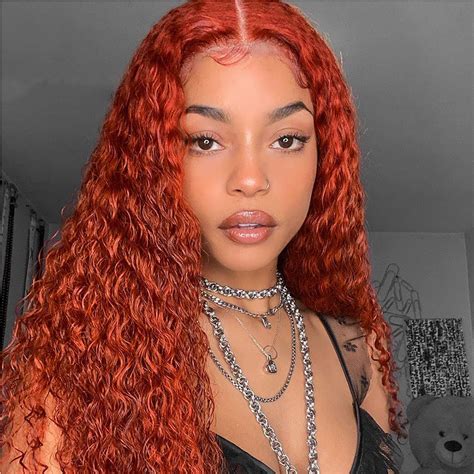Hair color, a captivating aspect of human physiology, unveils an intricate tapestry of hues, ranging from the deepest midnight black to the sunlit glimmer of platinum blonde. This captivating attribute is not merely a cosmetic trait but a reflection of our genetic history, geographical ancestry, and even health status.

The Science of Hair Color: A Symphony of Melanins
At the heart of hair color lies a fascinating duo of pigments known as eumelanin and pheomelanin. Eumelanin, the dominant pigment, imparts shades of brown and black, while pheomelanin bestows the golden hues of auburn, red, and blonde.
The interplay between these pigments creates a vast spectrum of hair colors. People with high eumelanin levels tend to have darker hair, while those with more pheomelanin sport lighter shades. However, this interplay is far more intricate, as subtle variations in the ratios and distribution of these pigments give rise to the exquisite diversity of hair colors we observe.
Hair Color and Genetics: A Blueprint from Our Ancestors
Our hair color is largely dictated by our genetic inheritance, passed down through generations by our parents and ancestors. The genes responsible for hair color reside on chromosome 11, specifically within a region known as the MC1R gene.
Mutations in the MC1R gene can disrupt the production or distribution of melanin, leading to a range of hair color variations, including red hair, blonde hair, and premature graying.
Geographical Variations: A Tapestry of Hues
Hair color distribution across the globe showcases remarkable geographical variations. Darker hair colors prevail in regions closer to the equator, where exposure to intense sunlight may have driven natural selection for UV protection. Conversely, lighter hair colors are more common in higher latitudes, where reduced sunlight exposure might have favored lighter shades for better visibility and social recognition.
Hair Color: A Window into Health and Well-being
Hair color can sometimes provide insights into our health status. For instance, premature graying may indicate an underlying autoimmune condition or thyroid dysfunction. Conversely, certain hair color changes, such as loss of pigment or discoloration, can be early signs of nutrient deficiencies or systemic disorders.
In addition to its cosmetic and genetic significance, hair color has inspired a multitude of creative applications, spanning art, fashion, and even technology:
- Interactive Hair Color: Researchers are exploring hair dyes that change color in response to environmental stimuli, such as temperature or light, offering endless possibilities for personalized and responsive hair styling.
- Smart Hair: Researchers envision smart hair that can sense and transmit information, enabling wearable devices and health monitoring systems to be seamlessly integrated into our daily lives.
- Hair as a Biomaterial: Scientists are investigating the use of hair as a renewable and biodegradable material for applications ranging from wound dressings to sustainable packaging.
Table 1: Natural Hair Color Distribution by Region
| Region | Dark Hair | Light Hair |
|---|---|---|
| Africa | 95% | 5% |
| Asia | 90% | 10% |
| Europe | 75% | 25% |
| North America | 65% | 35% |
| South America | 60% | 40% |
Table 2: Hair Color and Genetic Variations
| Hair Color | Gene | Mutation |
|---|---|---|
| Brown | MC1R | Val92Met |
| Black | MC1R | Arg151Cys |
| Blonde | MC1R | R163Q |
| Red | MC1R | Phe156Trp |
Table 3: Hair Color and Health Conditions
| Hair Color Change | Possible Health Condition |
|---|---|
| Premature Graying | Autoimmune conditions, Thyroid disorders |
| Yellowing | Liver or gallbladder disease |
| Greenish Hue | Copper deficiency |
| Excessive Hair Loss | Hormonal imbalances, Autoimmune disorders |
Table 4: Hair Color Applications in Science and Technology
| Application | Description |
|---|---|
| Interactive Hair Color | Hair dyes that change color in response to stimuli |
| Smart Hair | Hair that can sense and transmit information |
| Hair as a Biomaterial | Sustainable and renewable material for various applications |
1. What is the rarest hair color?
Natural red hair is the rarest hair color, affecting approximately 1-2% of the global population.
2. Can hair color change over time?
Yes, hair color can change over time due to factors such as aging, sun exposure, hormonal changes, and certain medical conditions.
3. Is it possible to get natural black hair without hair dye?
Yes, natural black hair is possible even without hair dye. People with high eumelanin levels and no genetic variations in the MC1R gene typically have naturally black hair.
4. Can hair color predict personality traits?
While there is no scientific evidence to suggest that hair color can accurately predict personality traits, certain cultures and stereotypes often associate certain hair colors with specific personality characteristics.
5. What are the benefits of henna hair coloring?
Henna hair coloring is a natural and traditional hair coloring method that can provide benefits such as strengthening the hair shaft, reducing dandruff, and adding a vibrant and unique color to the hair.
6. What are the potential risks of hair bleaching?
Hair bleaching can damage the hair by breaking down the protein structure, leading to dryness, breakage, and loss of elasticity.
7. How can I maintain the health of my colored hair?
To maintain the health of colored hair, it is recommended to use color-safe shampoos and conditioners, avoid excessive heat styling, and protect the hair from sun exposure and environmental damage.
8. What are some innovative hair color trends to watch out for?
Emerging hair color trends include holographic hair, mermaid hair, and rainbow roots, offering a wide range of vibrant and eye-catching hair color options.
